Are you planning to go on an outdoor adventure, and do you need a power source for your appliances and gadgets? The solution is in getting a flexible solar panel. This new category of solar photovoltaics is perfect for all those who require portable power, such as campers, hikers, and boaters.
As their name suggests, these devices are bendable to a certain degree. This is very convenient – you can mount flexible solar panels at a place where you wouldn’t be able to attach a regular panel. They’re especially suitable for curved surfaces, such as RV roofs. Flexible solar technology has improved a lot in the last decade.
Comparison Table:
The result of this is the appearance of numerous new brands and models, which makes choosing just one product daunting. Have no worries – we’ll take an in-depth look at the top models and help you make the right choice.
Top Rated Flexible Solar Panels
1. Renogy 160 Watt – Editor’s Pick
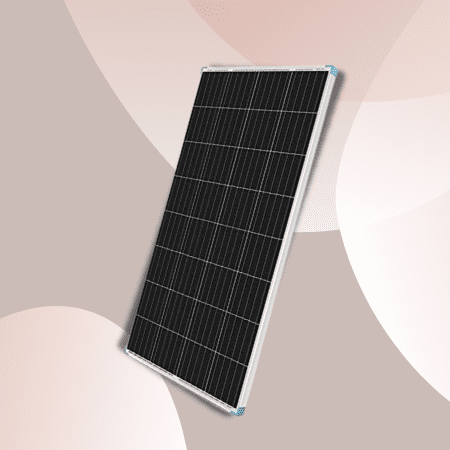
Renogy is undoubtedly one of the leading manufacturers of solar panels. Their products are well-known for top performance, quality construction, and overall ease of use. Can the same be said for their new flexible model? Thanks to innovative lamination techniques and advanced solar cell technology, Renogy 160 Watt can achieve up to an outstanding 248-degree arc of flexibility. As such, it’s capable of meeting a broad variety of applications where regular panels are impossible to mount.
A good example is the curved roof of a travel trailer. Construction-wise, Renogy 160 Watt is exceptionally well-designed and very rugged. Like most other models in this price category, it easily withstands snow loads (up to 5400Pa) and high winds (2400Pa).
This brings the necessary peace of mind – you can keep driving your RV without having to worry about your panel getting damaged. Another great thing about this panel is its low weight. As it uses innovative polymer materials, it weighs a lot less than its conventional counterparts. As you can already guess, this makes installation and transportation a breeze.
Renogy 160 Watt is also very thin, at only a tenth of an inch. With the features mentioned above, this flexible monocrystalline panel deserves the status of our Editor’s Pick. It’s yet another great product from Renogy and something that cements the company’s status as one of the best manufacturers of solar panels.
Highlights:
- Flexible up to 248 degrees
- Ideal for curved surfaces
- Ultra-lightweight
- Withstands snow and winds
- Easy to install & transport
2. Richsolar 100 Watt – Quality Budget Friendly

The next flexible solar panel in our roundup comes from a relatively lesser-known company – Richsolar. Offering features such as sturdy construction, weather resistance, and a good warranty, it looks like an excellent deal. The design of this model is quite similar to that of the other models in the same price category. Black and white, the unit looks basic but functional. It can be purchased in four different sizes, each of which offers impressive flexibility.
Upon taking a closer look at the panel, one can immediately notice transparent dots on its surface. These allow Richsolar 100 Watt to harness sunlight from different angles. It’s a unique feature and one that leads to more successful utilization of solar power, as well as to an increased conversion rate. Richsolar 100 Watt was designed to charge 12V lead-acid batteries.
As it can be bent to 30 degrees, it can be installed on all sorts of curved and irregular surfaces. The presence of copper eyelets at the model’s corners makes the installation process quick and easy. This flexible solar panel is also very durable. The aluminum frame, the strong tempered glass, and the IP 65/67 rated junction box and MC4 connectors all work together towards prolonging the unit’s lifespan.
With Richsolar 100 Watt, you won’t have to worry about hailstorms, heavy snowfalls, and strong winds. For the price it comes, these kinds of flexible solar panels seem like a worthwhile investment. It was built with durability and ease of use in mind, and, as such, deserves our recommendation.
Highlights:
- Flexible up to 30 degrees
- Matrix-distributed dots for increased conversion rate
- Weather-resistant construction
- Copper eyelets for easy installation
- 25-year power output warranty
3. Allpowers Bendable Panel – Best Lightweight
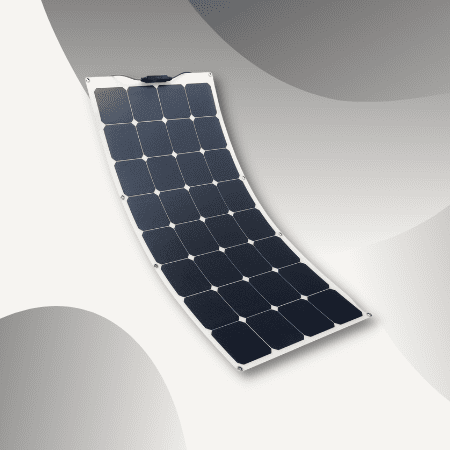
A Chinese company founded in 2008, ALLPOWERS manufactures and sells portable solar systems and chargers. They decided to get into the flexible game, too – their Bendable Panel introduces a number of interesting features.
As the name suggests, the primary selling point of this model is its flexibility. The user can bend its plastic back sheet up to a 30-degree arc. This allows one to install the panel on irregular surfaces, like those found on boats, RVs, trailers, trucks, and tents.
Although it packs 100W of power, ALLPOWERS Bendable Panel is surprisingly lightweight. It weighs close to five pounds and is, therefore, incredibly easy to hang, transport, and store. To install it, one has to use the model’s four metal-reinforced holes, which are situated at the unit’s corners. Performance-wise, ALLPOWERS Bendable Panel offers up to 23% efficiency.
This turns it into one of the better options on the market – you’ll be able to obtain more solar power with it. The unit comes with an integrated blocking diode, whose job is to prevent reverse current drain during the night. As a monocrystalline panel, this model is also very durable. It easily handles foul weather, including hail storms and heavy snowfall.
Furthermore, its junction back is sealed and, therefore, waterproof. If you’re looking for a sturdy but lightweight solar panel, this one is among your best options. It is flexible, efficient, durable, and easy to install – what more could one want?
Highlights:
- 23.5% efficiency
- Superb durability
- Ultra-thin & lightweight
- Flexes up to 30 degrees
- 18-month guarantee
4. Dokio 300w Panel Kit – Best for RV/Travel
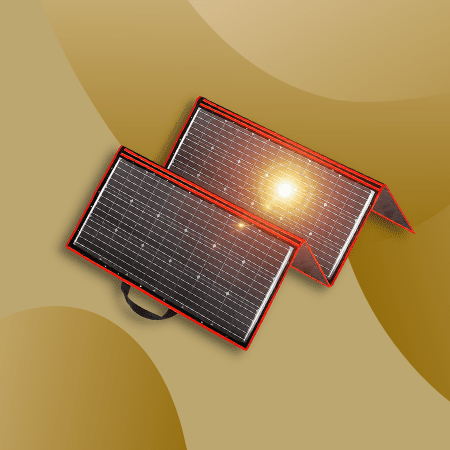
Here we have a solar panel coming from yet another China-based company – DOKIO. With portable design and broad applicability, their 300W Panel Kit offers a pretty good value for the money. One of the best things about this kit is how portable it is. Despite packing 300W of power, it is surprisingly thin and lightweight.
The model weighs only 17 pounds and is close to one inch thick. With these dimensions, it stands as one of the most portable 300 Watt panels. As expected, the high conversion efficiency is guaranteed. It uses monocrystalline solar cells to convert solar power into usable electricity.
With it, you’ll be able to charge batteries at 12V or most of your electronic devices, such as a laptop or a smartphone. The entire module is covered with a thick red fabric. DOKIO 300W Panel Kit can be folded, and it even comes with a practical handle. As you can already guess, this makes transporting it exceptionally easy. Moreover, its solar panels are both bendable and waterproof.
The wide applicability is one of this model’s biggest advantages. DOKIO 300W is ideal to use for hiking, picnics, camping and climbing. It can be placed on RV roofs, boats, motorcycles, tractors, and even snowmobiles. You’ll be able to use this kit to charge your phone or camera, and also your car battery in emergencies.
Highlights:
- Wide applicability
- 300 watts of power
- Practical, foldable design
- Thin & lightweight
- Free solar controller included
5. Windynation 100w – Great Quality Product
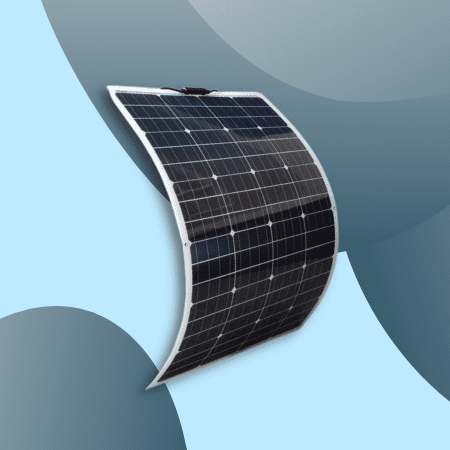
WindyNation is well-known for manufacturing and selling polycrystalline solar panels. This time, however, we’ll take a look at one of their popular monocrystalline offerings – WindyNation 100W. The company says that this unit is “semi-flexible.” As it can bend to a maximum of 30 degrees, however, its flexibility is quite similar to that of the other models we’ve reviewed.
You’ll be able to flush-mount it on most curved surfaces – tents, sailboats, and RVs. WindyNation 100W is particularly suitable for camping and similar outdoor adventures. This is because both the panel itself and its junction box are sealed and water-resistant.
You won’t have to worry about using it during rain or in any moist conditions. Performance-wise, this model provides a conversion rate of 24%. For a solar panel in this price category, this kind of efficiency is more than impressive.
You’ll be able to harness enough solar power to charge most of your appliances and electronic gadgets. Another advantage of WindyNation 100W is the overall ease of use. Installing it is effortless – the unit comes equipped with six evenly spaced mounting holes. The manufacturer states that the model can also be mounted by using Velcro or adhesives.
We recommend using fasteners, though – your installation will be much more secure. Flexible, durable, and easy to use – the WindyNation 100W has it all. It’s a basic but functional monocrystalline solar panel, and one you won’t regret purchasing.
Highlights:
- 24% sunlight to electricity conversion rate
- Bendable up to 30 degrees
- Waterproof – suitable for outdoor use
- Can be mounted with fasteners, adhesives, or Velcro
- Blocking the diode eliminates discharging at night
6. Uni-solar Pvl-136 Powerbond – Most Durable Product
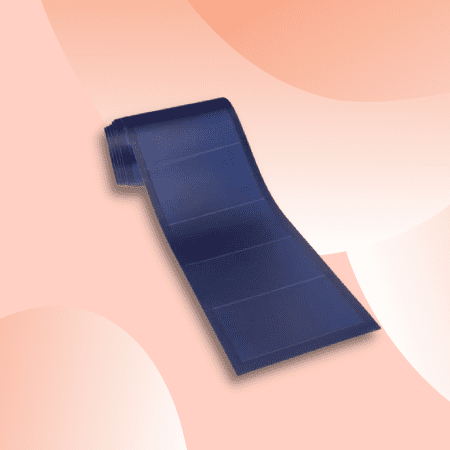
The next flexible solar panel comes from Uni-Solar, a lesser-known company. They manufacture and sell residential and commercial solar systems, as well as solar inverters, batteries, charge controllers, and similar products. Their PVL-136 PowerBond is truly something special.
Unlike most of the other models we’ve reviewed, this is a peel-and-stick panel – no racking systems are required. With a very sticky adhesive on its back, it can be installed directly on any roofing, and doing this is as easy as it gets.
You may be wondering – is it really going to hold? Aren’t fasteners a better solution? Uni-Solar states that the installation of this type can withstand class-3 hurricane winds. The model is very durable and much easier to set up than monocrystalline solar panels. Unlike most panels on our list, Uni-Solar PVL-136 uses triple-junction amorphous silicon solar cells.
These absorb red, green, and blue sunlight, converting them into usable electricity even in low-insolation conditions. Although not as efficient as monocrystalline technology, amorphous silicon technology performs much better in high temperatures. In our opinion, this flexible solar panel is an ideal solution for large, clean surfaces.
It can be installed on RV rooftops, boats, and buildings. As it works in temperatures of up to 185 degrees Fahrenheit, it can also be used in excessively hot climates. A 5-year warranty backs it. Uni-Solar PVL-136 is a worthwhile investment – installation is effortless, and performance is very impressive.
Highlights:
- Easy peel-and-stick installation
- Multiple PVL-136s can be chained together
- Withstands high winds
- Works in high temperatures
- 5-year warranty
7. Bougerv Ultra-thin – Great for Camping

The last solar panel we’ll analyze is BougeRV, a flexible, 100-watt unit with MC4 connectors. As its name suggests, this model is an ideal option for RV roofs. Weighing close to six pounds and having a thickness of just one inch, this is an ultra-thin and lightweight solar panel. As such, it is very portable and easy to transport. It can be gently flexed and installed on all types of curved surfaces. Besides RVs, they can also be used for tents, cabins, boats, vans, trucks, and curved roofs
. Due to its flexibility, it is also ideal for all places that are off-limits for aluminum and glass models. Some users report using it for BitCoin mining – they’re saving electricity costs. Despite its thin, lightweight construction, BougeRV is sturdy and won’t succumb to rain, heat, and aging. There’s also an integrated blocking diode.
As you probably already know, its job is to prevent reverse draining, which can happen during the night as there’s no sunlight. As it comes with pre-drilled grommets, installing BougeRV Ultra-Thin is exceptionally easy. There’s a reinforced hole at each of the model’s corners, so you won’t have trouble with mounting, transporting, and hanging.
However, the best thing about this flexible solar panel is that it boasts 23% to 25% efficiency. This is particularly impressive once we consider the price category it’s in. As such, it’s a suitable choice for anyone who needs a budget-friendly panel for his RV.
Highlights:
- Ultra-thin at 1″
- Ideal for curved roofs of RVs
- 100 watts of power
- Easy to install – pre-drilled grommets
- Resistant to elements
Finding the Best Flexible Solar Panels – Buying Guide
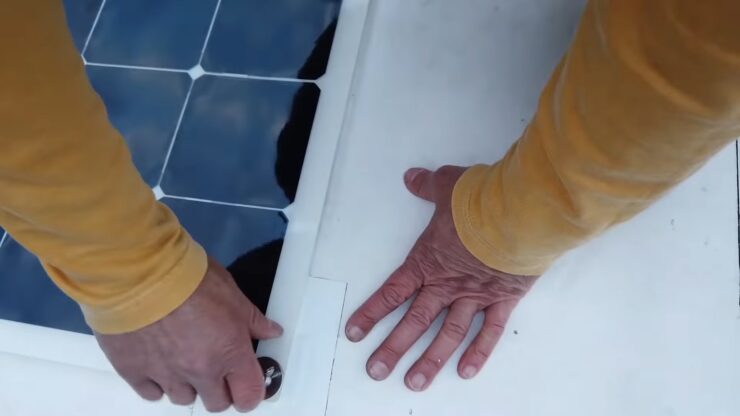
If you’re not that familiar with flexible solar panels, shopping for one may prove to be a challenging task. Like with all other products, there are certain things you need to keep in mind. In the following paragraphs, we’ll provide an overview of important features you need to look out for.
Things to Consider When Choosing the Best Product
1. Usage
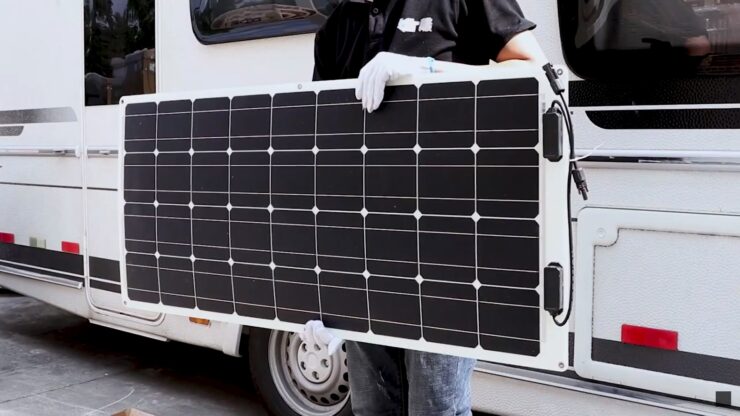
When shopping for a flexible solar panel, one needs to consider what they will be using it for. Are you an avid camper, and need a flexible solar panel for your tent? Or are you, perhaps, an RV enthusiast and need one of these devices for your van’s roof? Here’s an example – you own a travel trailer and often drive through desert-like areas with high temperatures.
In that case, you’ll need a model that withstands high heat. A panel that uses amorphous silicon cells would be the best choice – such models perform better in extreme temperatures. The performance of monocrystalline panels, on the other hand, decreases with high heat.
Or, let’s say you have a large, clean surface on which you want to install a solar panel. For such purposes, models like Uni-Solar PVL-136 PowerBond are the best. They feature a peel-and-stick installation and are the ideal solution.
2. Versatility
Another important thing to consider is your future model’s versatility. However, flexible solar panels are already versatile by nature and have wide applicability. Nevertheless, there are still certain bells and whistles that can make your model more versatile.
Ultra-flexible panels, for example, can be installed literally anywhere. Their construction makes them perfect for use on the go – you’ll never find yourself in a situation in which you won’t be able to use them. Similarly, waterproof panels allow one to use them in wet/moist conditions.
Heavy rainfall won’t be able to damage your model’s sensitive electronics. Another feature that can make a flexible solar panel versatile is the presence of convenient accessories. If you, for example, purchase a model that comes with a kit of chords of different lengths, you’ll never have to buy any extension cables. The same can be said for units that come together with assembly tools.
3. Technology
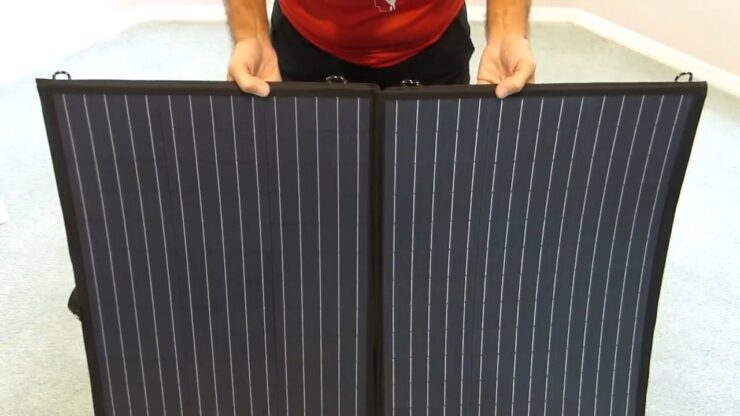
Most of today’s solar panels are made up of blocks of polycrystalline or monocrystalline silicon. These are sliced down into tiny substrates, each of which makes up an individual solar cell. As you can already guess, these are then put together to make a solar panel. Thin film, on the other hand, is made differently.
The process is similar to that of the printing press – various materials are deposited into a special, bendable substrate. It’s a less expensive method of making PVs (photovoltaics), but also the one that produces less efficient solar cells. Despite this disadvantage, thin-film panels have a huge benefit – they’re fully bendable, and can even be rolled up in some cases.
They’re the ideal option for charging portable electronics. If you need more power, however, (you want to install your panel on a boat or RV, for example), select a model made of bendable crystalline solar. These are less flexible than their thin-film counterparts (only up to a 30-degree angle) but can still be installed on most curved surfaces.
4. Efficiency
When talking about the efficiency of these devices, the term refers to how fast a particular model can convert sunlight into electricity. As you can see in our roundup of the market’s most popular flexible solar panels, efficiency varies from one model to another – some are more efficient than others.
However, most units don’t move out of the 10% -25% range. The higher this percentage is, the faster you’ll be able to use the energy harnessed from the sun. Flexible panel technology has gotten significantly better in the last decade, so even the budget-oriented models offer impressive efficiency.
If you’re planning to use your model to charge only smaller electronics, such as smartphones and tablets, efficiency doesn’t have to be among your top priorities. You will, however, need one with a high conversion rate if you’re planning to use it for charging your RV’s battery, for example.
Important Features to Look for
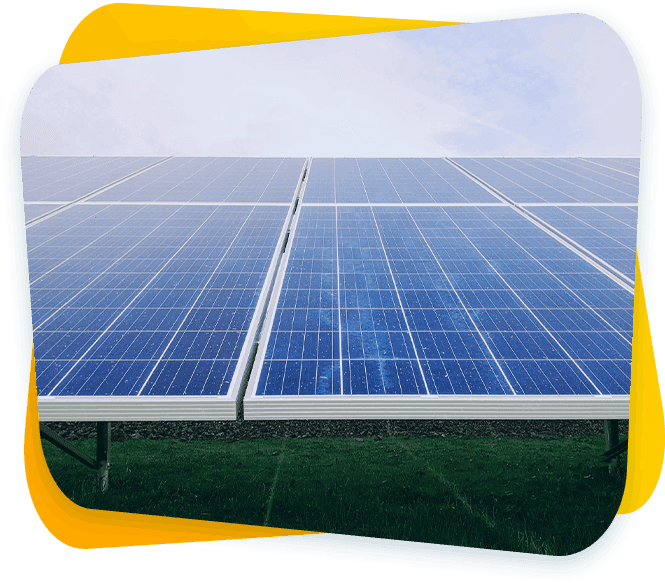
1. Size and Weight
When buying a flexible solar panel, two essential factors you need to consider are size and weight. These will mostly depend on how and where you want to use the device. If you, for example, want to use your panel on to go, for charging smaller electronic appliances, choose a model that’s compact and lightweight.
This is particularly important if you’re a hiking enthusiast – you don’t want to add any extra weight to your backpack. If you intend to use it in a larger space, however, feel free to purchase a larger, more powerful unit.
2. Power
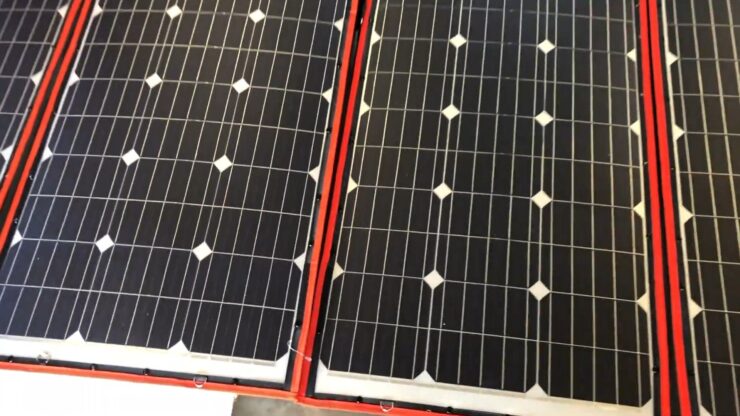
The primary aim of purchasing one of these devices is obtaining free electricity. Therefore, it’s crucial to look out for models with higher power output. A unit with more watts (W) will let you harness more energy from sunlight. DOKIO 300w Panel Kit, for example, offers top performance for a flexible solar panel.
An important thing to mention here is that most flexible models aren’t that good for home rooftop solar projects. While powerful enough for smaller, mobile projects, they don’t provide the same amount of energy as their stationary counterparts. RVs or boats, on the other hand, they’re a perfect fit.
3. Durability
The primary aim of purchasing one of these devices is obtaining free electricity. Therefore, it’s crucial to look out for models with higher power output. A unit with more watts (W) will let you harness more energy from sunlight. DOKIO 300w Panel Kit, for example, offers top performance for a flexible solar panel.
An important thing to mention here is that most flexible models aren’t that good for home rooftop solar projects. While powerful enough for smaller, mobile projects, they don’t provide the same amount of energy as their stationary counterparts. For RVs or boats, on the other hand, they’re a perfect fit.
4. Cell Efficiency
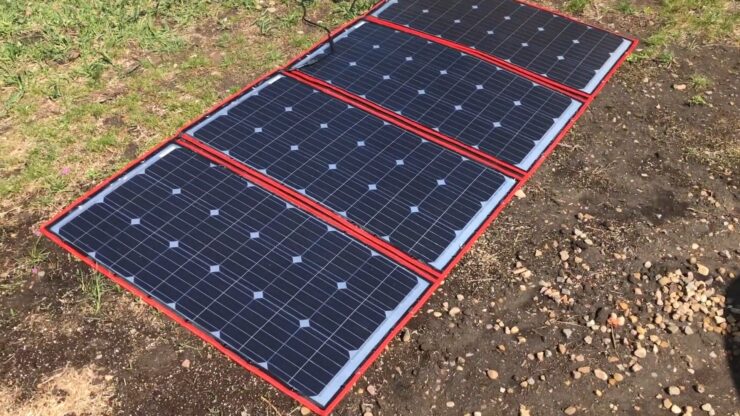
The efficiency of the cells present in your model will depend on its type. As we already mentioned, monocrystalline panels provide a higher conversion rate than their thin-film counterparts. However, they’re not as flexible – most models can be bent only up to a 30-degree angle.
Remember that models with a higher efficiency rating can convert more sunlight into usable electricity. The future usage of your flexible solar panel should dictate its efficiency – it’s as simple as that. You’ll wish to have a highly efficient model if you’re planning to use it for something more than just charging your phone.
5. Flexibility
Obviously, flexibility is the primary selling point of these products. As they’re bendable, they can be installed on curved surfaces, such as the curved roofs of travel trailers. Once again, flexibility depends on the type. Thin-film models are more flexible, and can sometimes even be rolled up.
A good example is the Uni-Solar PVL-136 Powerbond, which comes rolled up in a box. However, most of the models in our roundup aren’t that flexible. Still, each one of them can be easily installed on all sorts of curved and irregular surfaces. Based on monocrystalline technology, they’re also more efficient.
How to Install Flexible Solar Panels?
After deciding which flexible solar panel to purchase, the next question will be how you can install it. Fortunately, you won’t require any professional help – it’s something you can easily do by yourself. Most of the time, installing a flexible solar panel is exceptionally easy. It’s a simple and straightforward process once you choose the place where you want it installed. You will, however, need to make sure that it doesn’t fall off in case of bad weather, such as a hailstorm or heavy snowfall.
Most of the models we’ve analyzed come with pre-drilled grommets. While some people don’t mind drilling any surface to install the panel, some individuals aren’t that comfortable with it. This is especially true when it comes to RV roofs and boats. If that’s the case, remember that you can always purchase a backing of plywood.
Rather than drilling holes through your vehicle, screw the panel to the plywood. Another way to install a flexible solar panel would be to use tape or adhesive glue. In fact, some models were designed to be installed this way – Uni-Solar PVL-136 PowerBond is a good example.
Once the installation process is over, you’ll be able to set up the system. If you’re unsure how to do this, make sure to check the user manual you’ve got with your model. Nevertheless, the installation is usually (if ever) the hardest part – using one of these devices is fairly simple.
FAQ
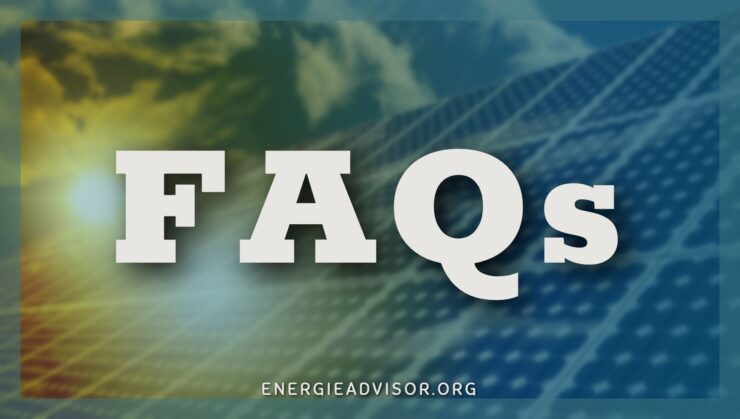
Q1: What Are Flexible Solar Panels Most Useful for?
Probably the best application for flexible solar panels comes up in situations when you need solar power on the go. Flexible panels are a way to generate electricity from the sun while you’re out and about, such as on your RV or boat.
If you need portable and lightweight power, and you enjoy a lot of camping trips, you may also want to consider folding solar panels. All things considered, flexible panels are great for when you’re driving long distances, camping, or sailing. It’s hard to beat a flexible and lightweight, yet durable solar solution in a situation like that.
Q2: Are Flexible Solar Panels Less Efficient?
In many ways, flexible panels are superior to their rigid counterparts. They are thinner and lighter and can bend as their name implies. They work very well for those applications when the weight and stiffness of a traditional solar panel would not suffice. While all of this is true, flexible solar panels can also be slightly less efficient.
This is usually due to the way they are mounted. As traditional panels are typically raised a few inches off the surface, they allow more airflow, thus keeping their temperature low and efficiency high. Flexible panels are usually laid flush against the surface, which somewhat diminishes their productivity.
Q3: How Much Does the Average Flexible Panel Weigh?
There are many factors to consider when answering this question, and it is going to be challenging to give a definitive answer. What we can say, though, is that flexible panels are, on average, about 75% lighter than their stiff counterparts.
For example, a 100W rigid panel may weigh from 16 to 20 pounds, while a flexible panel with the same power capabilities may weigh only 4-5 pounds. This is a massive factor for those who need a lightweight solution. The downside is the somewhat lower efficiency and the possibility of overheating that comes with flexible panels.
Conclusion
Bendable to a certain degree, flexible solar panels are a perfect option for anyone who owns an RV, a boat, or a tent.
Once installed on a curved surface of your choice, your model will convert the sunlight into usable electricity. In most cases, the power is not sacrificed for flexibility – these devices are just as efficient as their rigid counterparts. To help you select one that will suit your needs, we’ve rounded up and analyzed some of the market’s most popular offerings.
Hopefully, you’ll be able to make an informed decision and start saving money by harnessing sunlight. Good luck!

